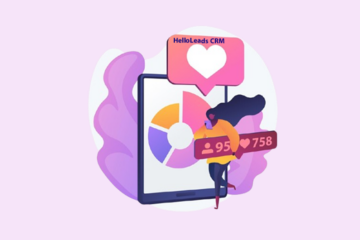
If you’ve been following technology trends, you’ve likely become familiar with ChatGPT, a significant language model that has garnered attention thanks to OpenAI. But it’s not just the big players who are making strides in generative AI. In fact, smaller projects are emerging continually, leaving their mark in diverse domains such as music, art, and literature.
These generative AI tools are designed to save time and make the creative process accessible to more people. Certain tools can generate images, while others can compose emails, and some are even capable of producing videos. It’s clear that generative AI is here to stay, but there are still questions about how fast it will progress, the legal and ethical implications, and how it will ultimately affect work. Despite these uncertainties, the impact of generative AI is undeniable and it will undoubtedly continue to shape the future of creativity and innovation.
Before delving into the Top 5 generative AI tools and their substantial advantages, let’s first understand what generative AI is and how it works.
What is generative AI and how does generative AI works?
Generative AI is a type of artificial intelligence that allows computers to create original content. It is a subfield of machine learning that involves training a model on a large dataset of examples, enabling it to generate new content that is similar in style or structure to the original data.
Various methods exist for generative AI, with one prominent technique being Generative Adversarial Networks (GANs), wherein two neural networks are trained concurrently. One network generates new content, while the other network evaluates whether the generated content is real or fake based on its own knowledge of the original dataset. The two networks compete with each other, with the generator trying to create content that the evaluator cannot distinguish from the real data.
Another approach is Recurrent Neural Networks (RNNs), which can be used for generating sequences of data such as text or music. RNNs use a feedback loop that allows information to be passed from one step of the network to the next, allowing the model to remember previous inputs and generate output based on that context.
The quality of the generative AI output depends on the quality and diversity of the training data, as well as the sophistication of the model architecture and training techniques used. Generative AI has many applications, such as creating artwork, music, and even writing articles. With generative AI, computers can create content that was previously only possible for humans to produce, leading to new opportunities for creativity and innovation.
Top 5 generative AI tools:
1 . Murf AI

Murf.ai is an AI-powered voice generator that offers a convenient solution for creating high-quality voiceovers for a wide range of digital content, including e-learning videos, podcasts, animations, and games. With Murf.ai, users can generate professional-grade voiceovers in a matter of minutes, thanks to its advanced AI technology. The tool also provides users with the flexibility to customize the pitch and pronunciation of their voiceovers, making it easier to align them with specific video requirements.
Moreover, Murf AI lets users to create studio-quality voiceovers from mere text inputs/commands and these voiceovers are immensely helpful from promotional videos to podcasts. The platform offers over 120 different voice styles to choose from, including options for more than 20 different languages and accents, ensuring a wide variety of high-quality voice options to suit any project.
2 . Jasper AI

In the world of writing software, Jasper AI offers businesses, brands, and individuals a ChatGPT alternative that quickly and accurately generates SEO-friendly content. Jasper Chat is an interactive tool that will feel familiar to those accustomed to ChatGPT, as it uses natural language to create content.
Jasper AI is tailored specifically for marketers, and it can be used for various mediums like ads, email, blogging, website content, and social media. It comes with multiple AI-powered templates to help users get started immediately. The platform also features a generative AI platform that generates content customized to the user’s requirements, without manual input. Moreover, Jasper recipes are pre-made sets of text commands that can create writing in a particular format, making it easy for users to craft compelling and persuasive content.
3 . ChatSonic

ChatSonic by WriteSonic is a powerful AI chatbot and writing tool that’s being touted as the best alternative to ChatGPT. Powered by NLP and machine learning algorithms and enhanced with GPT-4 technology, ChatSonic can comprehend context and nuances at a higher level than ChatGPT’s free version. This platform also provides recommendations for sentence structure, tone, and word choice to assist you in efficiently crafting high-quality content. Furthermore, ChatSonic has the ability to create digital artwork and respond to voice commands for various tasks. As part of WriteSonic’s suite of AI writing tools, ChatSonic offers numerous templates and tools that can help businesses and individuals improve their writing skills and create engaging content with ease.
4 . You.com (YouChat)

YouChat by You.com is a search assistant powered by AI that brings a new dimension to internet search. Users can type natural language queries to receive conversational format results. YouChat goes beyond typical search engines to understand user intent and provides accurate responses using a mix of language models and search algorithms. Whether you’re planning a trip, shopping for products, or simply seeking information, YouChat is a versatile tool that delivers intuitive results. Accessible on web and mobile platforms, YouChat provides a convenient and conversational way for users to engage with the internet.
YouChat is a reliable source of information that offers features perfect for research and fact-checking. By integrating reliable sources, YouChat can provide citations and links to back up its answers to user queries. In addition, the AI-powered chatbot provides concise yet informative snippets of information to address user inquiries quickly and efficiently. Through YouChat, users can conveniently verify and cross-reference information, saving both time and effort.
5 . Bard

Google has unveiled its latest AI chatbot, Bard, which uses NLP and machine learning to provide real-time responses to diverse inquiries. With a sleek and clean Material design, Bard features a user-friendly interface and the ability to edit previous questions and restart conversations. The chatbot performs several functions, including generating text, translating languages, crafting creative content, and answering questions quickly. Bard is available to US and UK-based customers, with a short waiting list for interested users.
AI and ML have made remarkable advancements in recent years and have become increasingly prevalent in our everyday professional activities. With platforms like ChatGPT gaining popularity, it’s exciting to see the emergence of alternative tools that offer unique features and capabilities. As technology continues to evolve, we can anticipate the emergence of even more innovative solutions that will further enhance our productivity and creativity.
Share this blog :










